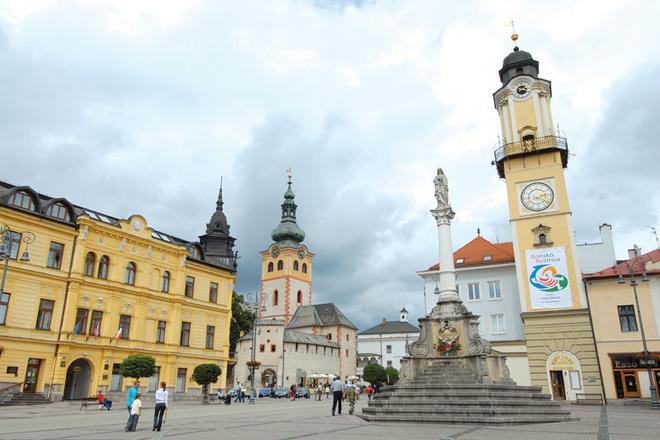THE ACADEMY of Arts in Banská Bystrica was founded in 1997 as the first - and is still the only - university in central Slovakia that specialises in arts education.
“The Academy of Arts builds on the unique character of its three faculties, with the aim of giving students an interdisciplinary style of learning,” Peter Vítko, the deputy rector for education and international relations, told The Slovak Spectator.
As a result, the Academy's management wants to establish new inter-faculty study programmes that would use the school's potential to satisfy the demands of the labour market. At the moment, the most popular programmes are graphics, acting and string instruments. Two new programmes are opening in the coming academic year: theatre direction and theatre dramaturgy, both of which will taught under the Faculty of Performing Arts.
Vítko said that art schools have specific needs, in particular an individual approach to education, which means that the ratio of students to professors is comparatively low. This is not taken into consideration during budgeting, which means arts education is underfinanced. The Academy is trying to fill the gap by applying for European grants and projects.
Nonetheless, the Academy’s students don’t appear to have a problem proving themselves nationally and internationally. As an example, Vítko referred to a documentary by Ľubomír Viluda and Ivan Kršiak, which received an award at the Worldfest international film festival in Houston, Texas.
The Academy also takes pride in the increasing number of international students who apply.
“Language skills, intercultural and social skills and relationships with other cultures are highly important in today’s globalised world,” Vítko explained.
The presence of international students provides opportunities for all the Academy’s students, which is why the management is working to improve the quality of its study programmes and introduce new programmes taught in English.
Vítko said international students receive individual instruction within the framework of the subjects taught in Slovak, with the option of consulting with a professor in English or some other foreign language. The full-time international students currently come mainly from the Czech Republic and Austria, but there are also students from partner universities in Lithuania, Poland, Italy and Finland who arrive as part of the Erasmus exchange programme. All international students are allowed use of the dormitories, free internet connection, and other services. And this summer, the management is planning to prepare new scholarships that will include support for talented students from abroad.
“Every year we have several applications from students from Romania and Bulgaria who would like to study at the Academy, but for whom the cost of living in Slovakia is too high, even after a tuition waiver,” Vítko said.
Lack of finances to support talented students is not the Academy’s only challenge in attracting foreign students. Vítko acknowledged concerns about the library, which doesn’t have enough foreign-language texts, and professors’ foreign languages skills. However, the Academy is preparing to address all these concerns, Vítko said.
“I’m convinced that just as the past years were dedicated to proving the Academy’s place within the network of Slovak universities and finding the right balance for our methods and study programmes, the coming years will be focused on turning our educational and artistic activities toward Europe and the world,” Vítko said.
After all, art exemplifies universal themes that transcend borders.
“Music, fine arts and the performing arts are international,” Vítko said. “From this point of view, the Academy of Arts is in a good position for international exchange of both students and professors, as well as an international presentation of its artistic and scientific output.”
Academy of Arts
in Banská Bystrica
Founded: 1997
Faculties: 3
Students: 557
Rector: Matúš Oľha
Website: www.aku.sk



 Banská Bystrica (source: Jana Liptáková)
Banská Bystrica (source: Jana Liptáková)